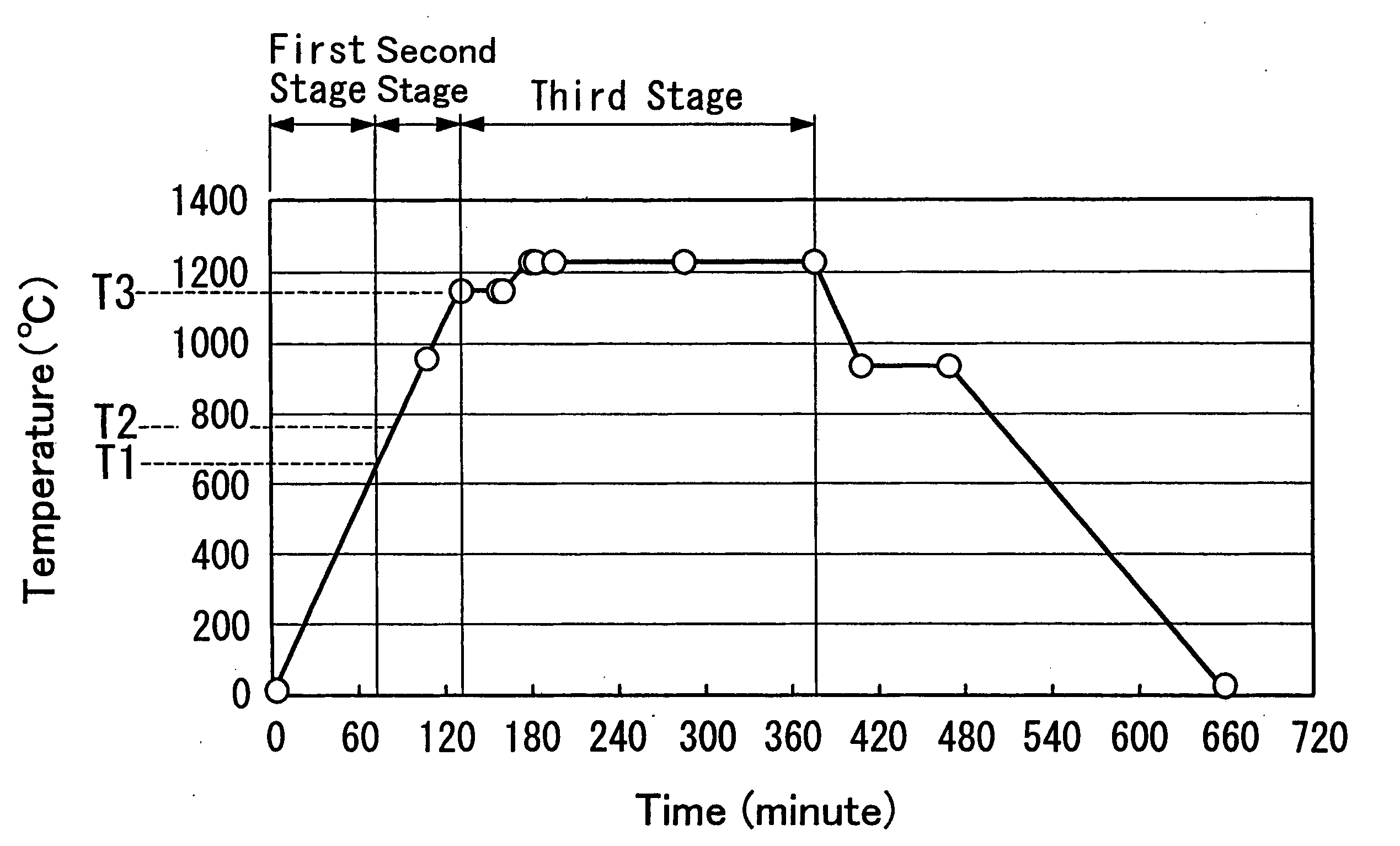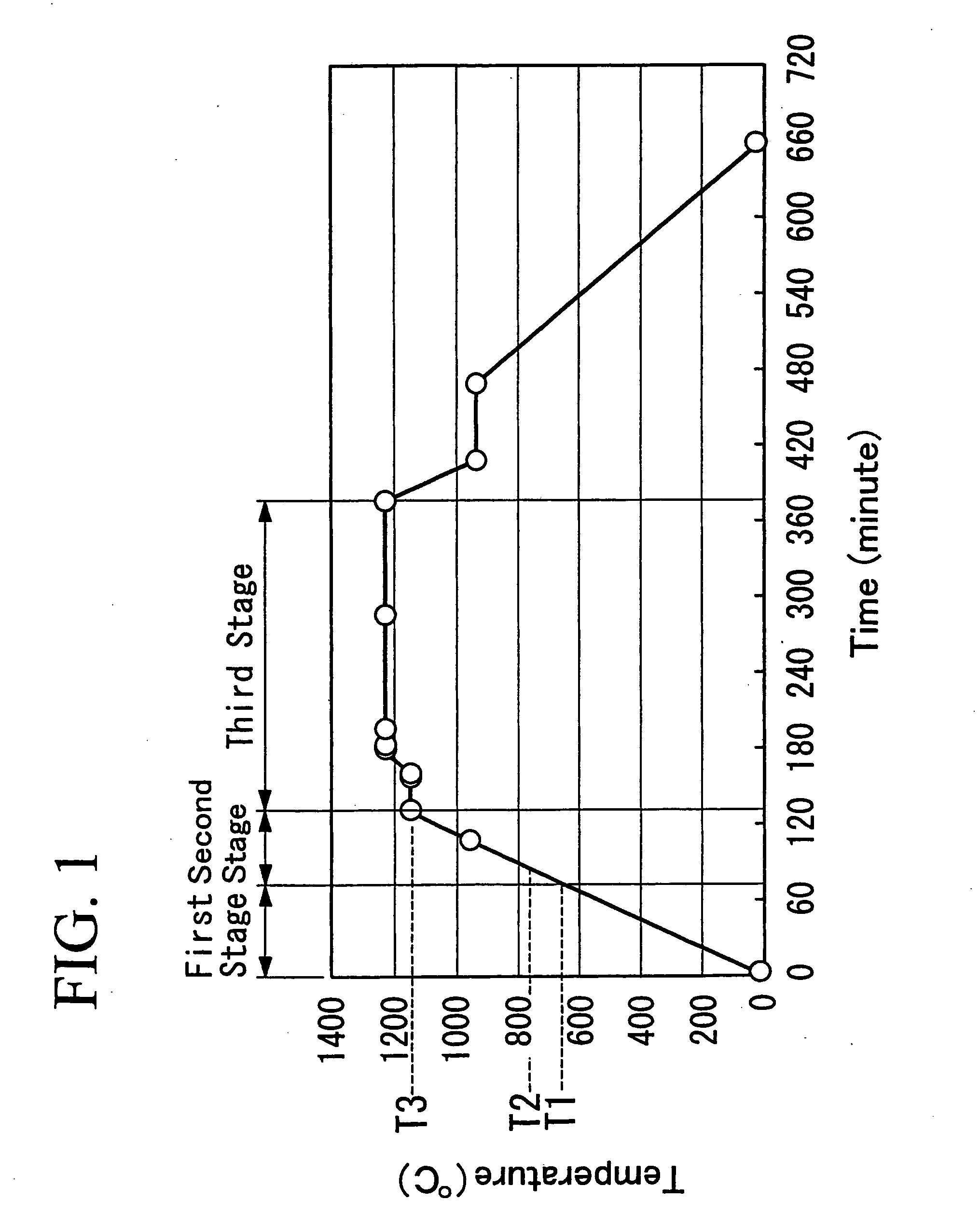Method for producing magnetostrictive element and sintering method
a magnetostrictive element and sintering technology, applied in the field of method for producing magnetostrictive elements, can solve the problems of reducing yield and deteriorating strength, and achieve the effect of improving element yield
- Summary
- Abstract
- Description
- Claims
- Application Information
AI Technical Summary
Benefits of technology
Problems solved by technology
Method used
Image
Examples
example 1
[0065] Hydrogen generation rate during the first stage (heating stage) was measured under different conditions in the furnace, under almost vacuum and in an inert gas (Ar gas) atmosphere, to compare the effects of these conditions. The results are described below.
[0066] As for Starting Material A, Tb, Dy and Fe were weighed and then melted in an inert gas atmosphere of Ar to prepare the alloy having a composition Tb0.4Dy0.6Fe1.94. It was annealed to secure an even concentration distribution of each metal element of the prepared alloy and remove a dissimilar phase when it deposits, and was then milled by an atomizer. Next, as for Starting Material B, DyH2 and Fe were weighed at given ratio and were melted in an inert gas atmosphere of Ar, where the DyH2 / Fe ratio was set in such a way that Starting Material B had a composition of Dy2.0Fe after hydrogen was released during the sintering step. The resulting alloy having a composition of Dy2.0Fe was also milled in a similar manner by an...
example 2
[0073] Formation of nests in the magnetostrictive element sintered while it was held in the above-mentioned sintering container 10 was investigated. The results are described below.
[0074] First, 773 g of Starting Material A, Tb0.4Dy0.6Fe1.94, 101 g of Starting Material B described below and 46 g of Starting Material C, Fe, were milled and mixed with each other to prepare the starting alloy powder having a composition of Tb0.3Dy0.7Fe1.88. It was compacted in a mold in a magnetic field of 8 kOe, to prepare the compact 100. It had a stick shape, 7 mm in diameter and 100 mm in length. The DyH2 / Fe ratio was set for Starting Material B to have a composition of Dy2.0Fe after hydrogen was released, as in EXAMPLE 1.
[0075] The compact 100, put in the sintering container 10, was heated in a furnace following the temperature profile shown in FIG. 1.
[0076] The container body 11 of the sintering container 10 had internal dimensions of 170 mm in width, 240 mm in length and 60 mm in height.
[007...
PUM
| Property | Measurement | Unit |
|---|---|---|
| temperature | aaaaa | aaaaa |
| temperature | aaaaa | aaaaa |
| temperature | aaaaa | aaaaa |
Abstract
Description
Claims
Application Information
 Login to View More
Login to View More - R&D
- Intellectual Property
- Life Sciences
- Materials
- Tech Scout
- Unparalleled Data Quality
- Higher Quality Content
- 60% Fewer Hallucinations
Browse by: Latest US Patents, China's latest patents, Technical Efficacy Thesaurus, Application Domain, Technology Topic, Popular Technical Reports.
© 2025 PatSnap. All rights reserved.Legal|Privacy policy|Modern Slavery Act Transparency Statement|Sitemap|About US| Contact US: help@patsnap.com



